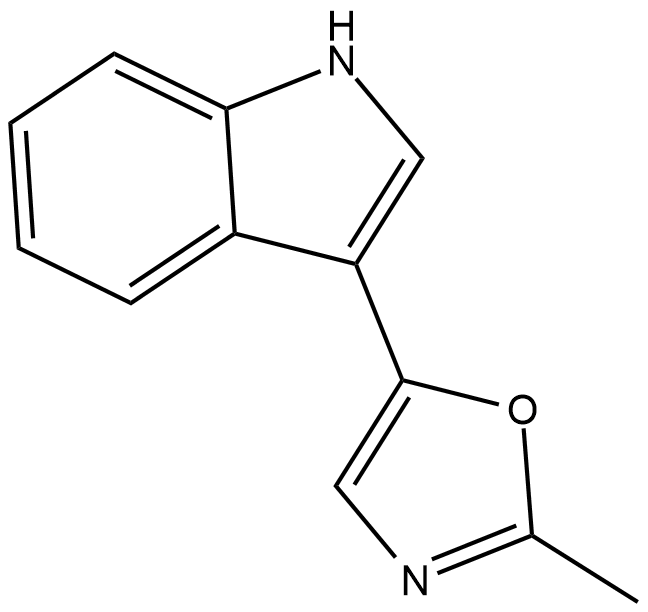Cyclooxygenase
Products for Cyclooxygenase
- Cat.No. Nombre del producto Información
-
GC40338
9-deoxy-9-methylene Prostaglandin E2
9-deoxy-9-methylene Prostaglandin E2 (9-deoxy-9-methylene PGE2) is a stable, isosteric analog of PGE2.

-
GC40470
9-deoxy-9-methylene-16,16-dimethyl Prostaglandin E2
9-deoxy-9-methylene-16,16-dimethyl Prostaglandin E2 (Meteneprost) is a potent analog of prostaglandin E2 with an extended half-life in vivo.

-
GC42646
9-keto Fluprostenol
9-keto Fluprostenol is an analog of prostaglandin E2 (PGE2) with structural modifications intended to give it a prolonged half-life and greater potency.

-
GC42647
9-keto Fluprostenol isopropyl ester
Fluprostenol is a well-studied, potent analog of prostaglandin F2α (PGF2α) and acts primarily through the FP receptor.

-
GC46761
9-Oxononanoic Acid
An oxidized fatty acid

-
GC42666
AAT-008
AAT-008 es un antagonista del receptor de prostaglandina EP4 potente, selectivo y activo por vÍa oral con Kis de 0,97 y 6,1 nM para EP4 humano recombinante y EP4 de rata recombinante, respectivamente.

-
GC42693
Acetaminophen Glucuronide (sodium salt)
Acetaminophen glucuronide is an inactive metabolite of the analgesic and antipyretic agent acetaminophen.

-
GC42694
Acetaminophen sulfate (potassium salt)
Acetaminophen sulfate is a metabolite of acetaminophen.

-
GC46781
Acetaminophen-d4
A Certified Reference Material

-
GC18882
AF3485
AF3485 is a selective 3-aminocarbazole inhibitor of mPGES-1, blocking the synthesis of PGE2 but not PGF2α in A549 cells stimulated with IL-1β (IC50s = 2.9 and >100 µM, respectively).
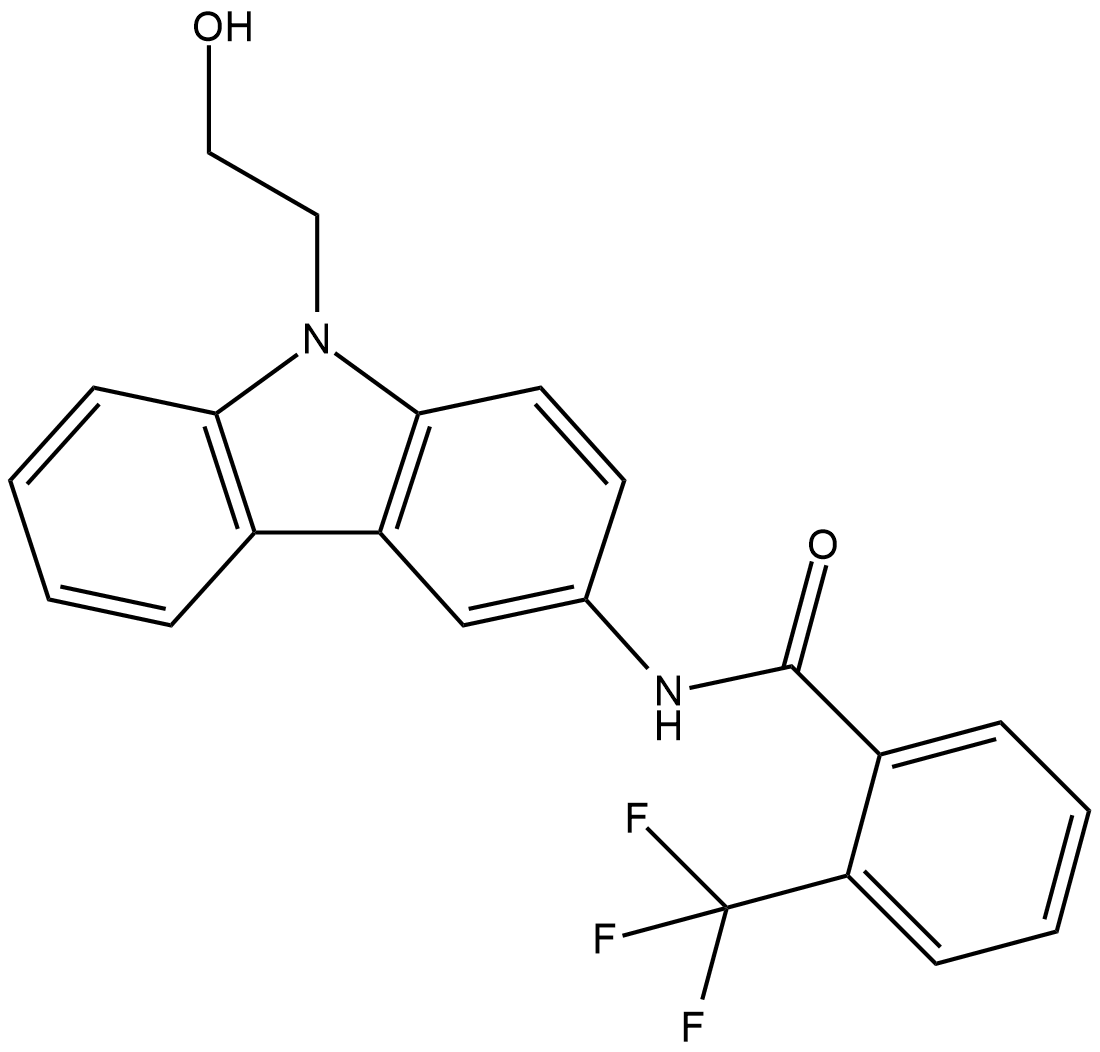
-
GC42746
AFP 07 (free acid)
Prostaglandin I2 is an unstable prostanoid which, through the 'I prostanoid' (IP) receptor, inhibits platelet aggregation and promotes vasodilatation in pulmonary vascular beds.

-
GC42760
AL 6598
Elevated intraocular pressure (IOP) is an important risk factor in developing glaucoma.

-
GC42761
AL 8810 ethyl amide
AL 8810 is an 11β-fluoro analog of prostaglandin F2α (PGF2α) which acts as a potent and selective antagonist at the FP receptor.

-
GC42762
AL 8810 methyl ester
AL 8810 is an 11β-fluoro analog of prostaglandin F2α (PGF2α) which acts as a potent and selective antagonist at the FP receptor.

-
GC46862
Apigenin-d5
An internal standard for the quantification of apigenin

-
GC46088
ASP7657
An EP4 receptor antagonist

-
GC42859
Aspirin-d4
Aspirin-d4 is intended for use as an internal standard for the quantification of aspirin by GC- or LC-MS.

-
GC42924
Beraprost (sodium salt)
Beraprost is an analog of prostacyclin in which the unstable enol-ether has been replaced by a benzofuran ether function.

-
GC41106
Bicyclo Prostaglandin E2
Bicyclo prostaglandin E2 (bicyclo PGE2) is a stable breakdown product of PGE2 and 13,14-dihydro-15-keto PGE2.
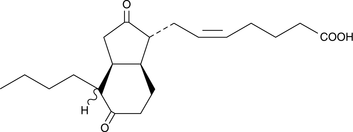
-
GC42995
Butaprost (free acid)
Butaprost is an EP2 selective agonist which has frequently been used to pharmacologically define the EP receptor expression profile of various human and animal tissues and cells.
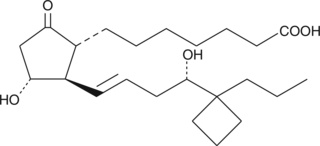
-
GC43065
C2 Phytoceramide (t18:0/2:0)
C2 Phytoceramide is a bioactive semisynthetic sphingolipid that inhibits formyl peptide-induced oxidant release (IC50 = 0.38 μM) in suspended polymorphonuclear cells.

-
GC43089
C6 Biotin Glucosylceramide (d18:1/6:0)
C6 Biotin glucosylceramide is an affinity probe that allows C6 glucosylceramide to be detected or immobilized through interaction with the biotin ligand.

-
GC40391
Carbaprostacyclin methyl ester
Carbaprostacyclin is a stable analog of prostacyclin (prostaglandin I2) which can activate the prostacyclin receptor or PPARδ.
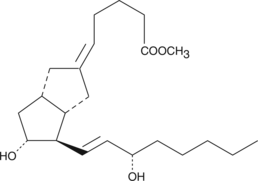
-
GC18837
Carbocyclic Thromboxane A2
CTA2 is a stable analog of TXA2.
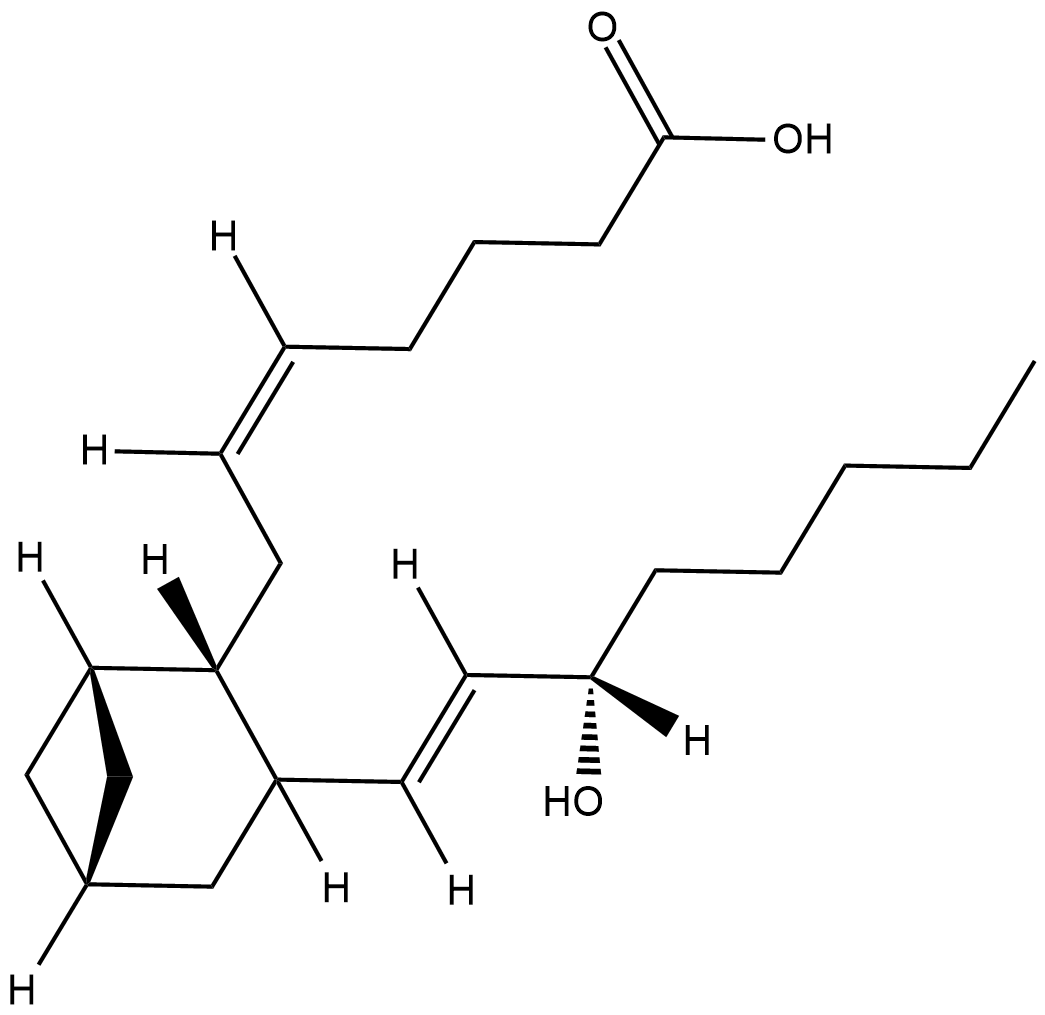
-
GC18549
CAY10397
Prostaglandins are rapidly inactivated in vivo by the action of 15-hydroxy prostaglandin dehydrogenase (15-hydroxy PGDH).
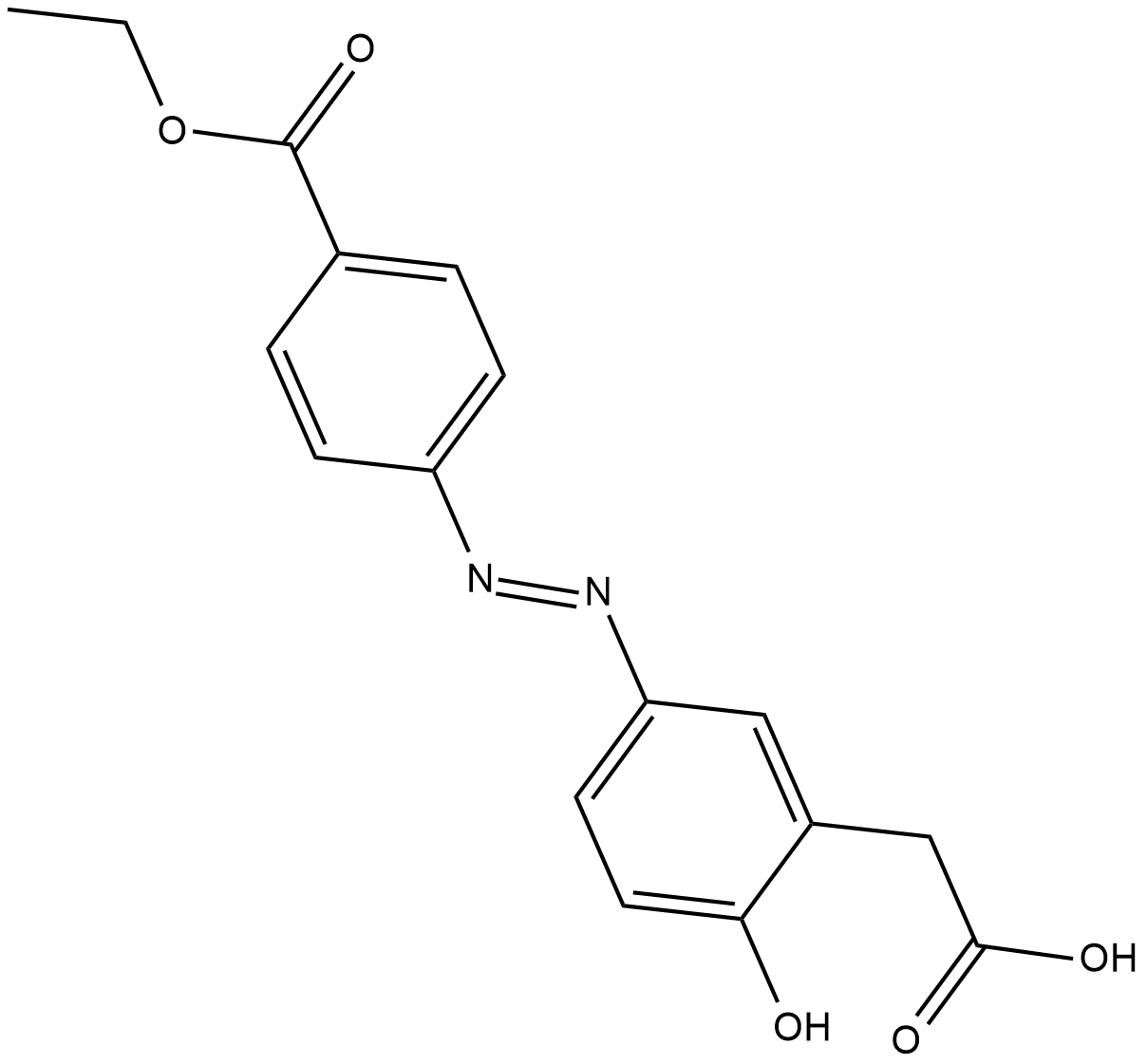
-
GC43151
CAY10408
Butaprost is a structural analog of prostaglandin E2 (PGE2) with good selectivity for the EP2 receptor subtype.
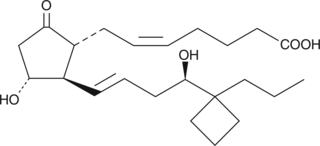
-
GC40384
CAY10410
CAY10410 is an analog of prostaglandin D2/prostaglandin J2 (PGD2/PGJ2) with structural modifications intended to give it PPARγ ligand activity and resistance to metabolism.

-
GC43153
CAY10416
Dual cyclooxygenase-2 (COX-2)/5-lipoxygenase (5-LO) inhibitors are potential therapeutic agents for inflammatory diseases and for prostate cancer.
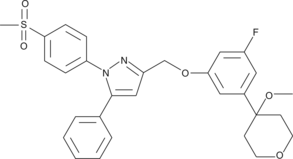
-
GC43156
CAY10449
Recently, a series of relatively simple compounds were found to be high-affinity ligands and functional antagonists for the human IP (prostacyclin) receptor.

-
GC18811
CAY10471
CAY10471 (TM30089) es un antagonista potente, selectivo y oralmente activo del receptor CRTH2 de prostaglandina D2.
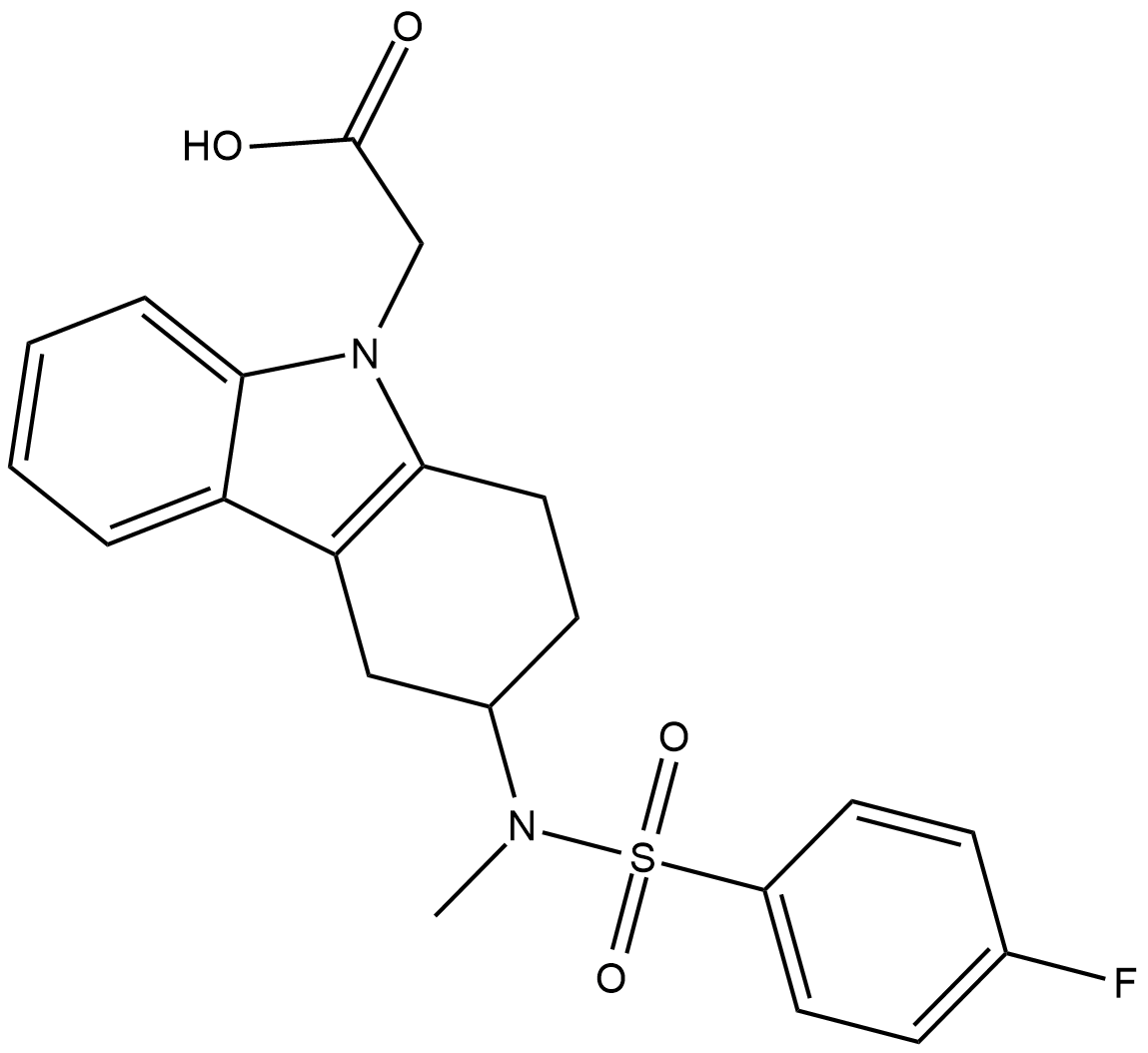
-
GC18898
CAY10509
The actions of many clinical prostaglandins, including those used for estrous synchronization and for reduction of intraocular pressure, are mediated through the FP receptor.
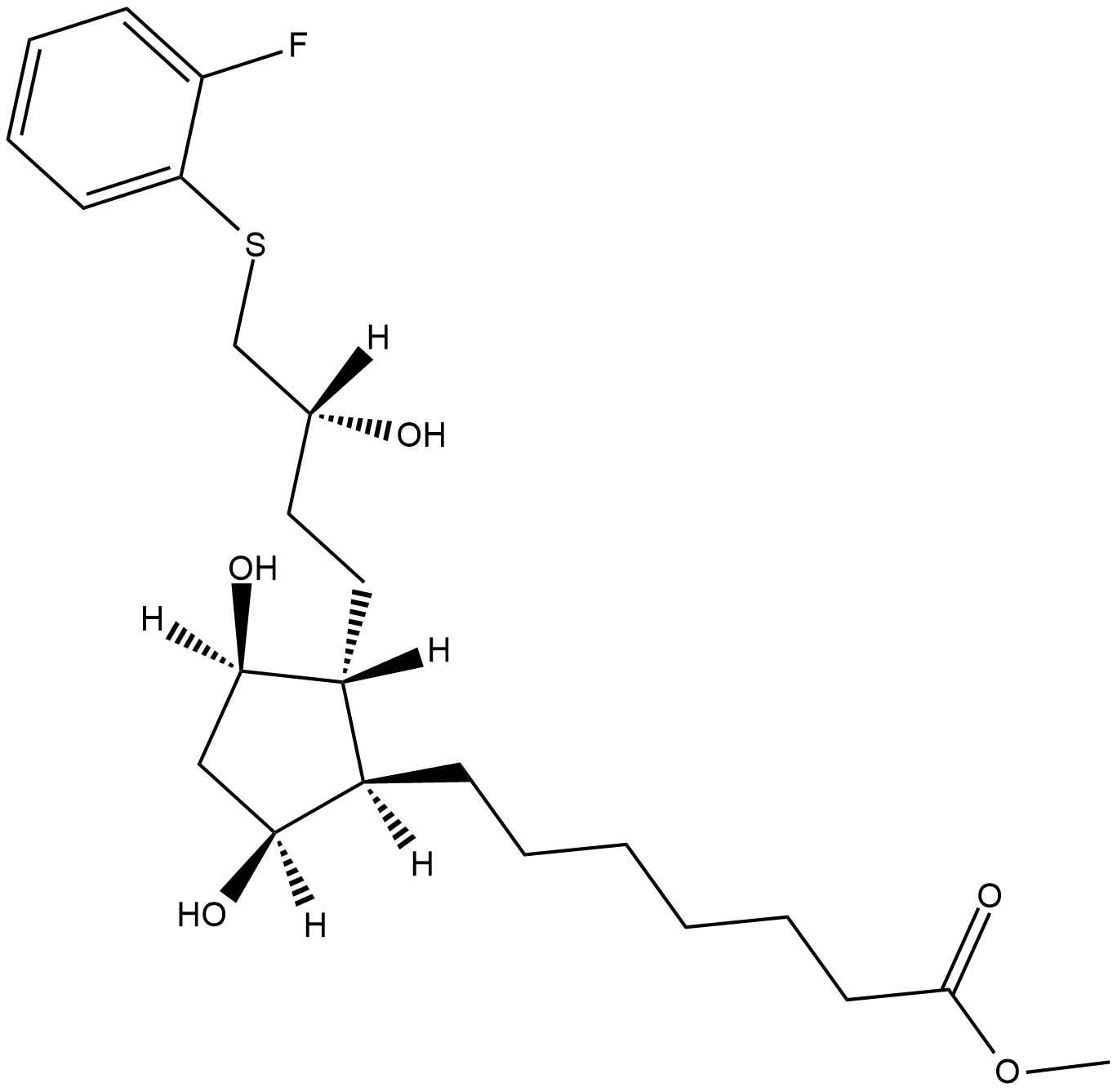
-
GC43164
CAY10510
The actions of many clinical prostaglandins, including those used for estrous synchronization and for reduction of intraocular pressure, are mediated through the FP receptor.

-
GC18856
CAY10526
CAY10526 es un inhibidor especÍfico de la PGE2 sintasa-1 microsomal (mPGES1). CAY10526 inhibe la producciÓn de PGE2 a través de la modulaciÓn selectiva de la expresiÓn de mPGES1 pero no afecta a la COX-2. CAY10526 suprime significativamente el crecimiento tumoral y aumenta la apoptosis en xenoinjertos de melanoma. CAY10526 reduce los niveles de proteÍna BCL-2 y BCL-XL (antiapoptÓticos) y aumenta los niveles de BAX y BAK (proapoptÓticos), asÍ como los niveles de caspasa 3 escindida. CAY10526 inhibe la viabilidad celular (IC50<5 μM) en tres lÍneas celulares de melanoma que expresan mPGES1.
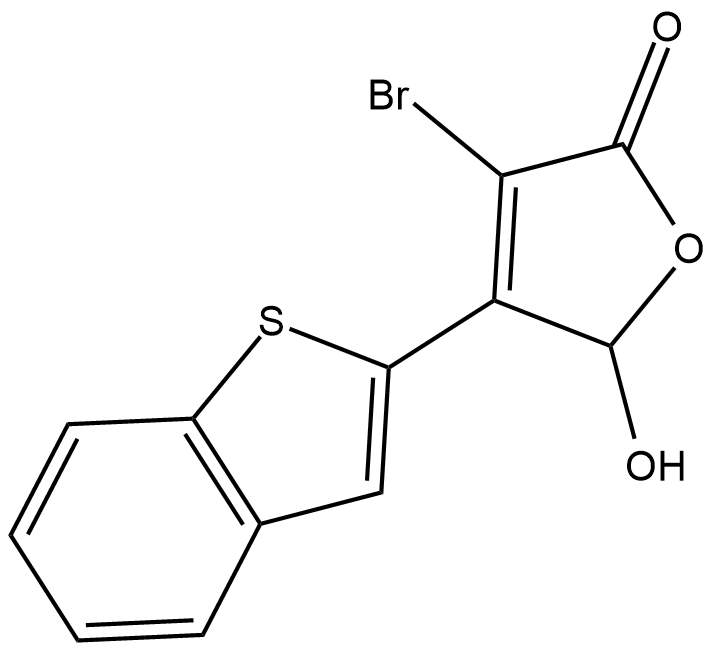
-
GC43166
CAY10535
TPα and TPβ are two isoforms of the human TP receptor, the G protein-coupled receptor (GPCR) that mediates the actions of thromboxane A2 (TXA2).

-
GC18814
CAY10580
CAY10580 es un potente y selectivo agonista del receptor de prostaglandina EP4 (Ki = 35 nM).
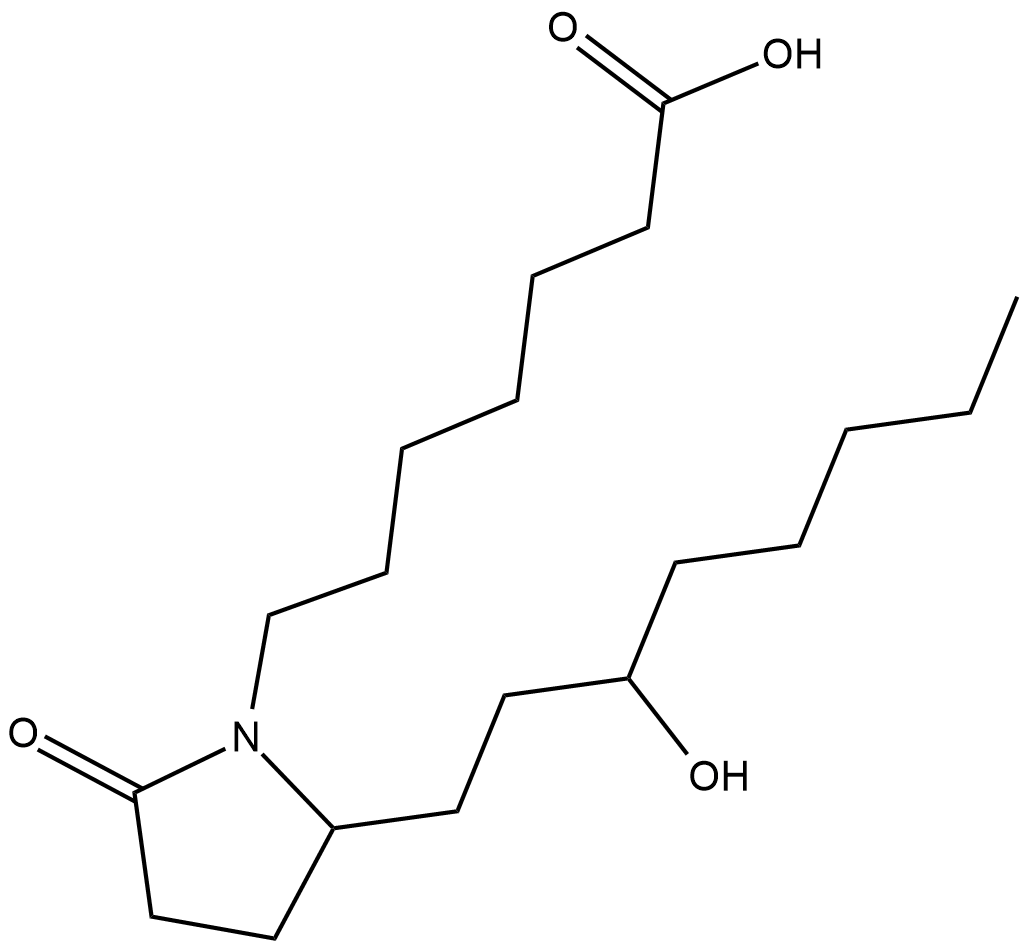
-
GC18688
CAY10589
Microsomal Prostaglandin E2 Synthase-1 (mPGES-1), with cyclooxygenase-2 (COX-2), synthesizes PGE2, which is directly involved in signaling during inflammation, fever and pain.
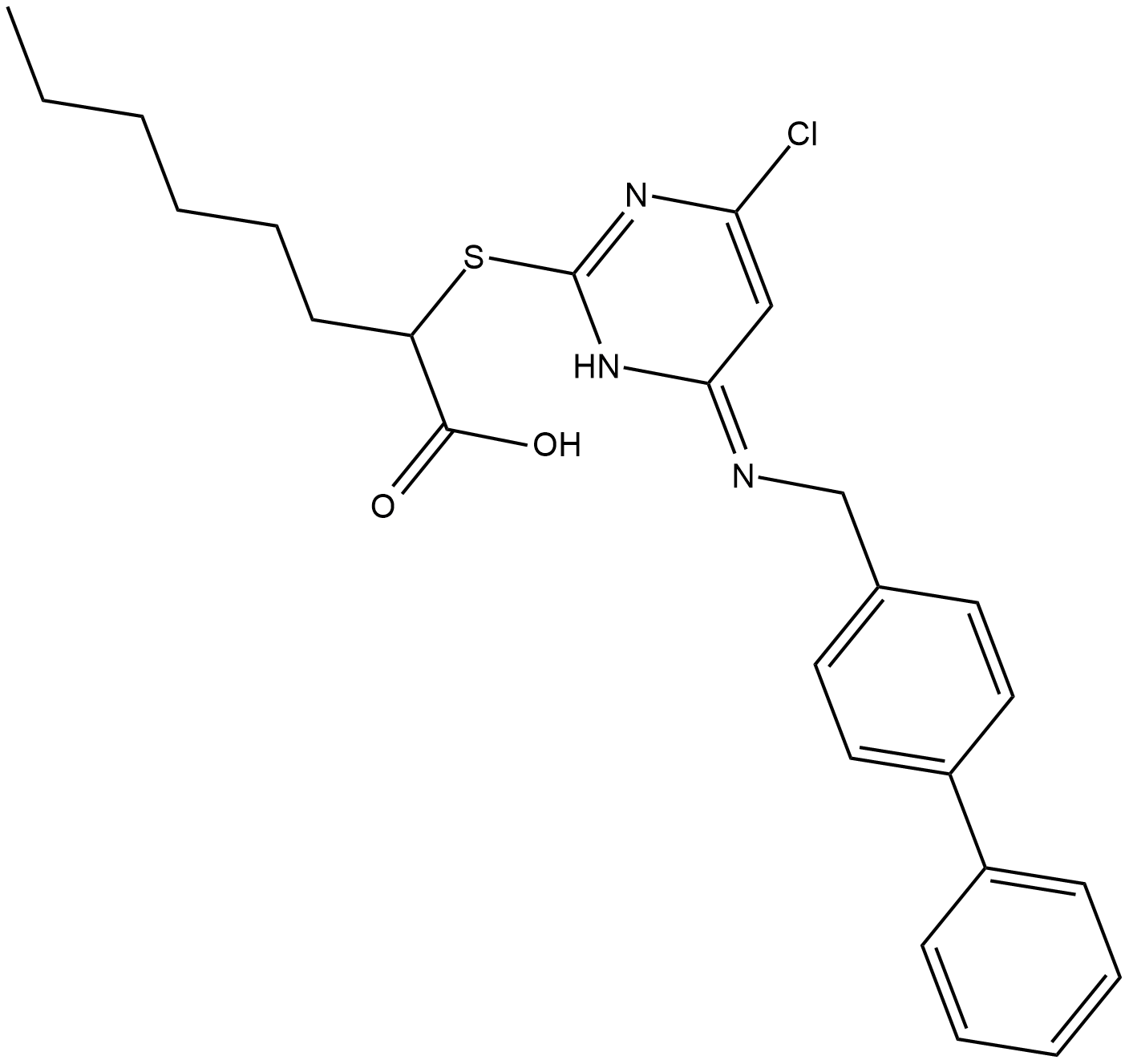
-
GC43181
CAY10597
The biological effects of prostaglandin D2 (PGD2) are transduced by at least two 7-transmembrane G protein-coupled receptors, designated DP1 and CRTH2/DP2.

-
GC18893
CAY10638
Prostaglandins have a short life in vivo because NAD+-dependent 15-hydroxy prostaglandin dehydrogenase (15-PGDH) catalyzes their oxidation to 15-keto metabolites with greatly reduced biological activity.
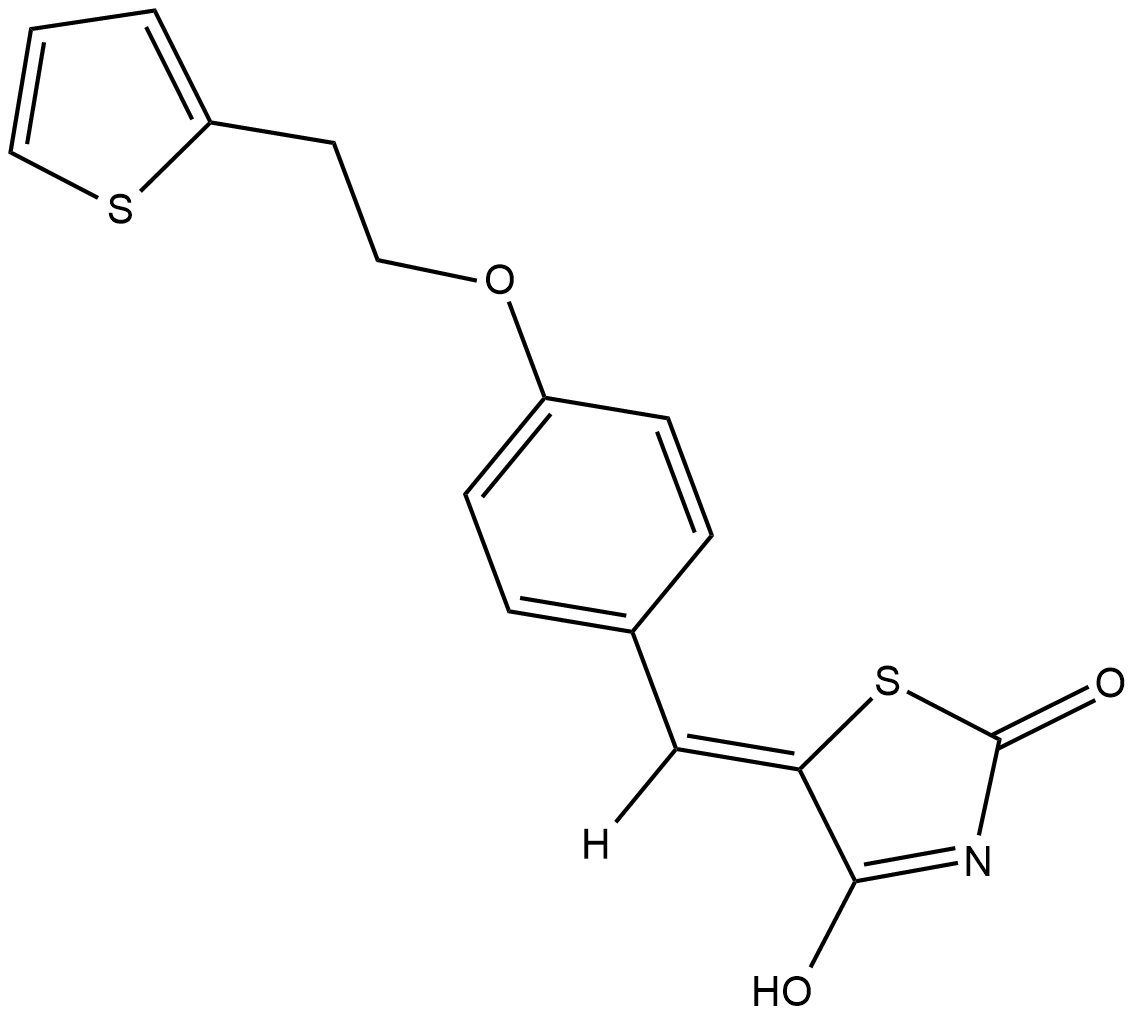
-
GC43191
CAY10684
Prostaglandin E2 activates four E prostanoid (EP) receptors, EP1-4.

-
GC18710
CAY10700
Prostaglandin E2 is the major PG synthesized at sites of inflammation and plays an important role in different inflammatory diseases.
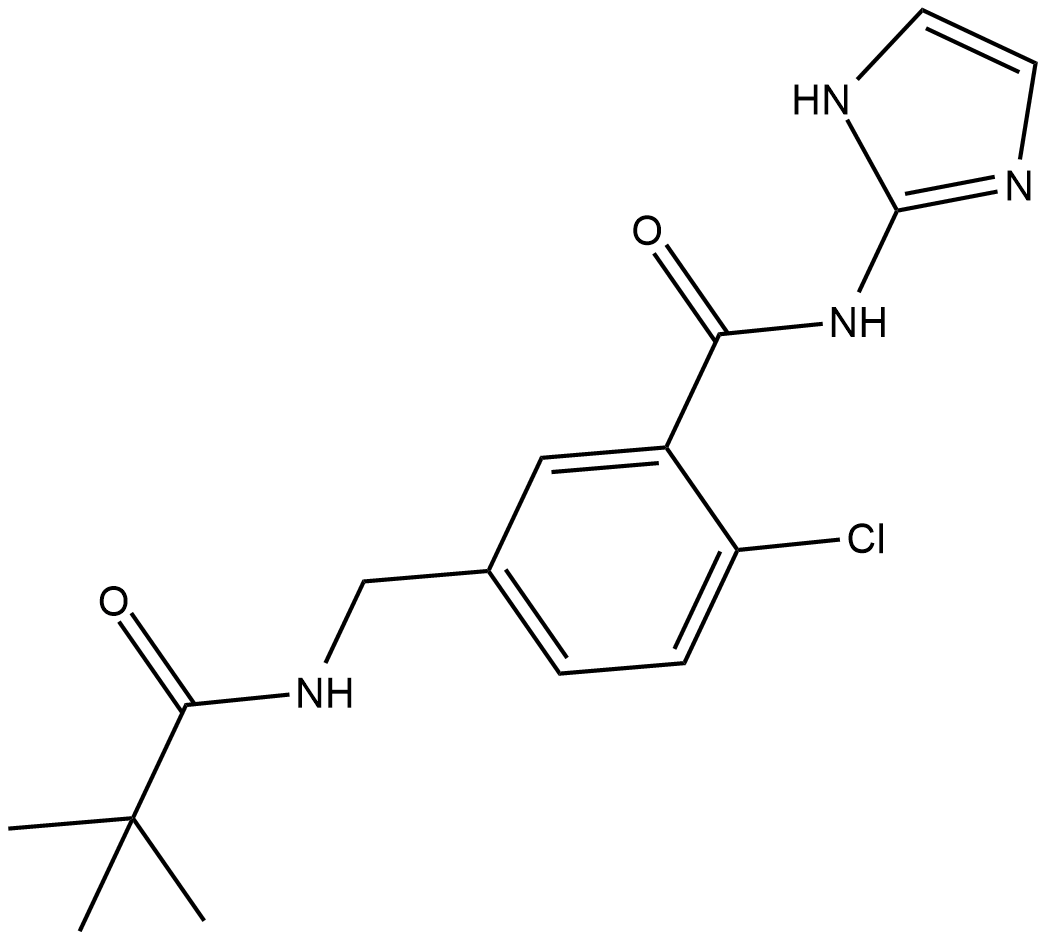
-
GC49152
Celecoxib Carboxylic Acid
An inactive metabolite of celecoxib

-
GC43225
Celecoxib Carboxylic Acid Acyl-β-D-Glucuronide
Celecoxib carboxylic acid acyl-β-D-glucuronide is a phase II metabolite of celecoxib.

-
GC47070
Celecoxib-d7
An internal standard for the quantification of celecoxib

-
GC43233
CG 4305
Prostacyclin (PGI2) is a cyclooxygenase metabolite with antithrombotic properties found in vascular endothelial cells.

-
GC41222
Cicaprost
Cicaprost (ZK 96480) es un agonista del receptor de prostaciclina (IP).

-
GC43270
Ciprostene (calcium salt)
Ciprostene is the 9β-methyl analog of carbaprostacyclin and a stable analog of PGI2.

-
GC45614
Cryogenine
An alkaloid with anti-inflammatory activity

-
GC47212
Diclofenac amide
A prodrug form of diclofenac

-
GC43447
Diclofenac methyl ester
Diclofenac methyl ester is a hydrophobic prodrug form of the non-steroidal anti-inflammatory drug (NSAID) diclofenac.

-
GC47213
Diclofenac-d4
An internal standard for the quantification of diclofenac

-
GC52470
Eicosanoids Metabolites MaxSpec® Discovery Mixture
A quantitative analytical standard mixture guaranteed to meet MaxSpec® identity, purity, stability, and concentration specifications

-
GC47287
Eltenac
Eltenac, un fÁrmaco antiinflamatorio no esteroideo (AINE), es un inhibidor de la COX.

-
GC43613
ent-Corey PG-Lactone Diol
Corey prostaglandin (PG)-lactone diol is a versatile, chiral intermediate used in the preparation of PGs and PG analogs.

-
GC41428
ent-Prostaglandin E2
Enzymatically-derived prostaglandin E2 (PGE2) is an optically pure compound whereas PGE2 derived from the free radical-catalyzed peroxidation of arachidonate is a racemic mixture.
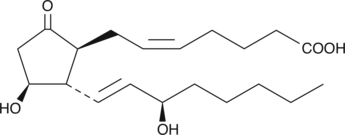
-
GC18794
ent-Prostaglandin F2α
Enzymatically-derived Prostaglandin F2α (PGF2α) is an optically pure compound whereas PGF2α derived from the free radical-catalyzed peroxidation of arachidonate is a racemic mixture.
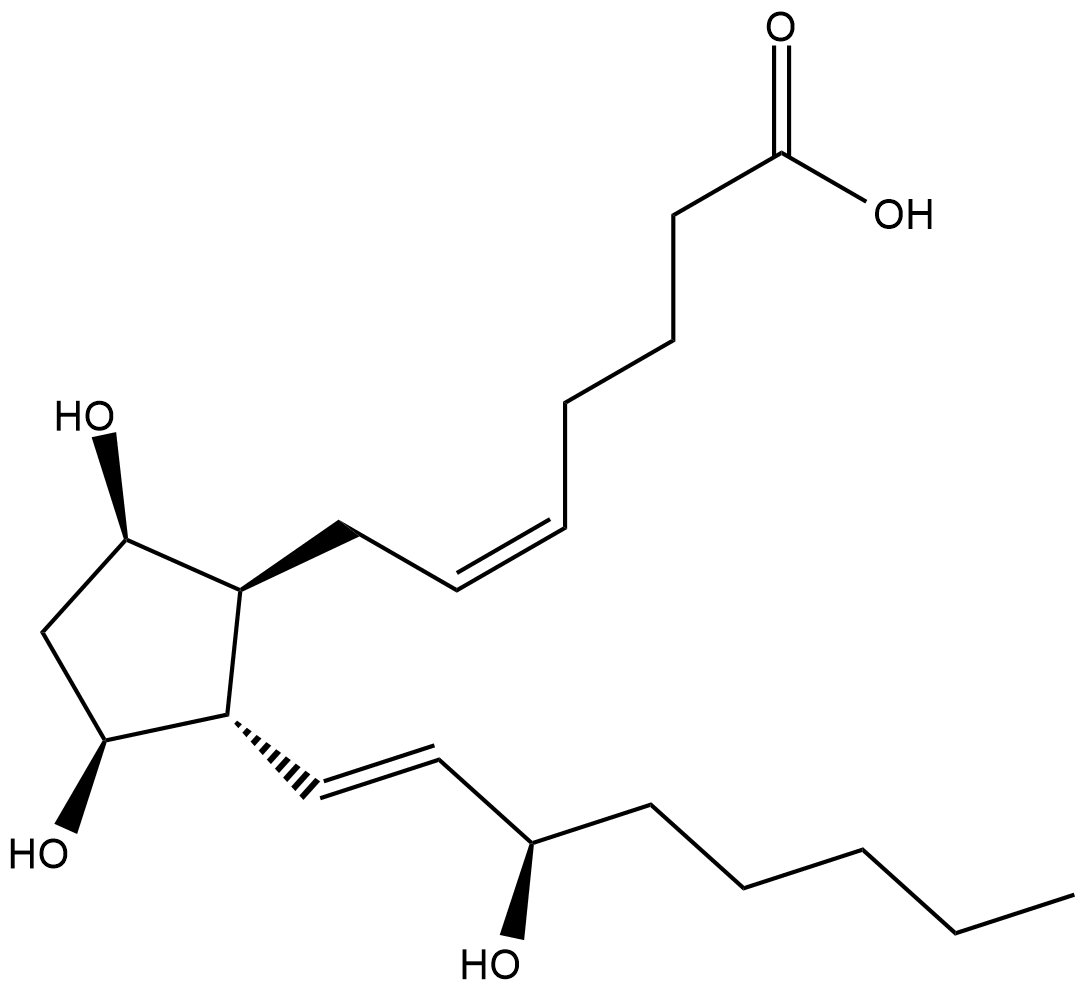
-
GC52516
Erbstatin
A tyrosine kinase inhibitor

-
GC49156
Etodolac Acyl Glucuronide
A phase II metabolite of etodolac

-
GC40565
Feprazone
Feprazone (DA2370; Prenazone), un anÁlogo de Phenylbutazone, es un agente antiinflamatorio no esteroideo con actividades analgésicas y antipiréticas.

-
GC48827
Flufenamic Acid-d4
An internal standard for the quantification of flufenamic acid

-
GC49747
Flunixin-d3
An internal standard for the quantification of flunixin

-
GC43690
Fluprostenol Lactone Diol
Fluprostenol lactone diol is an intermediate used in the preparation of fluprostenol.

-
GC43691
Fluprostenol methyl amide
Fluprostenol is an F-series prostaglandin analog which has been approved for many years as a luteolytic in veterinary animals.

-
GC43692
Fluprostenol methyl ester
Fluprostenol is an F-series prostaglandin analog which has been approved for many years as a luteolytic in veterinary animals.

-
GC43693
Fluprostenol serinol amide
2-arachidonyl glycerol (2-AG) exhibits cannabinoid (CB) agonist activity at the CB1 receptor, is an important endogenous monoglyceride species, and is thus considered to be the natural ligand for the CB1 receptor.

-
GC47366
Flurbiprofen-d3
An internal standard for the quantification of flurbiprofen

-
GC46150
Garcinoic Acid
El Ácido garcinoico es el anÁlogo de la vitamina E extraÍdo de las semillas de Garcinia Kola. El Ácido garcinoico muestra un marcado efecto antiproliferativo en las células cancerosas del glioma C6.

-
GC43799
GW 848687X
Four G protein-coupled receptors, EP1-4, initiate cellular signaling in response to prostaglandin PGE2.
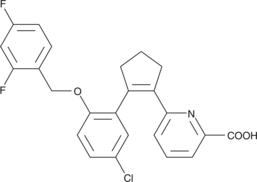
-
GC41396
Heneicosapentaenoic Acid
Heneicosapentaenoic Acid (HPA) is a 21:5 ω-3 fatty acid present in trace amounts in the green alga B.

-
GC40814
Heneicosapentaenoic Acid methyl ester
El Ácido Heneicosapentaenoico (HPA) es un ácido graso presente en cantidades traza en la alga verde Bryopsis pennata Lamouroux y en aceites de pescado.

-
GC49130
Hydroxy Celecoxib
An inactive metabolite of celecoxib

-
GC17816
I-BOP
TP specific agonist
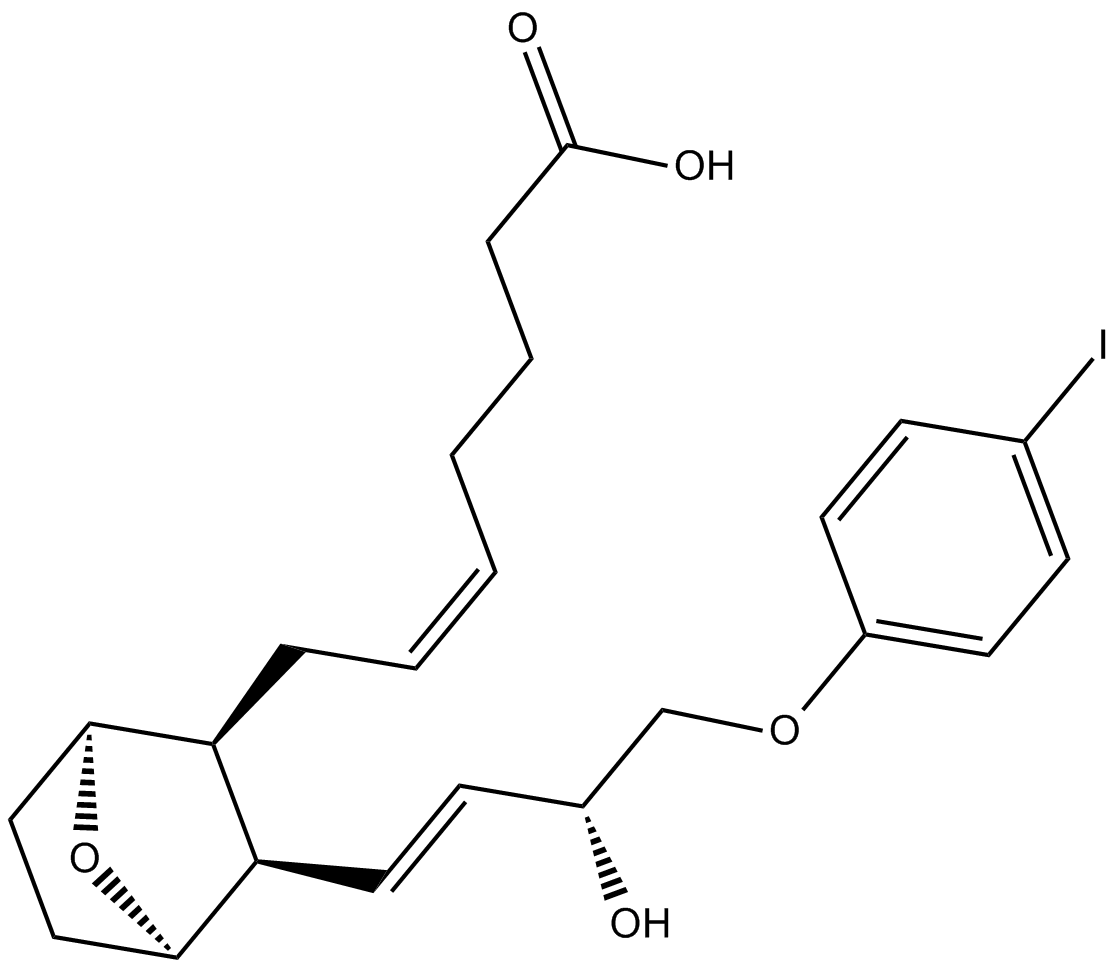
-
GC43910
I-SAP
I-SAP is a high affinity TP receptor antagonist.

-
GC11080
ICI 192,605
ICI 192,605 es un potente antagonista de TXA2R (receptor de tromboxano A2) como prostaglandina de señalización celular.
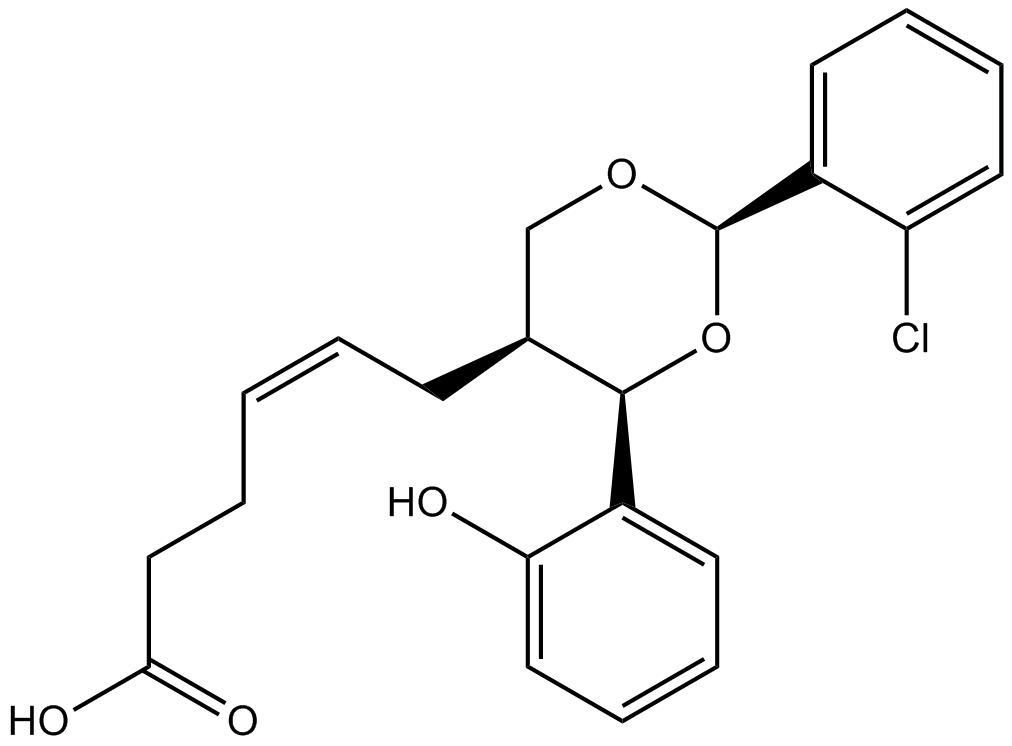
-
GC49698
Indomethacin Acyl Glucuronide
A metabolite of indomethacin

-
GC41645
Jacaric Acid
Jacaric acid is a conjugated polyunsaturated fatty acid first isolated from seeds of Jacaranda plants.

-
GC47528
Ketorolac (calcium salt)
El ketorolaco (RS37619) hemicÁlcico es un fÁrmaco antiinflamatorio no esteroideo (AINE) que actÚa como un inhibidor no selectivo de la COX, con IC50 de 20 nM para COX-1 y 120 nM para COX-2.

-
GC44010
KMN-80
KMN-80, un derivado de PGE1, es un agonista selectivo y potente del receptor EP4 con una CI50 y una Ki de 3 nM y 2,35 nM, respectivamente.

-
GC44023
L-902,688
L-902,688 es un agonista del receptor EP4 potente, selectivo y activo por vía oral con una Ki de 0,38 nM y una EC50 de 0,6 nM.

-
GC44035
LAS191859
LAS191859 is a potent antagonist of CRTH2/DP2 with IC50 values of 9.58, 14, 15.5, and 7.6 nM for recombinant human, rat, mouse, and guinea pig CRTH2/DP2 receptors, respectively.

-
GC47539
Latanoprost (free acid)-d4
Internal standard for the quantification of latanoprost (free acid)
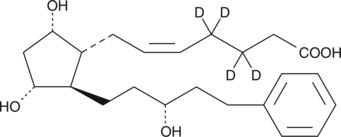
-
GC47540
Latanoprost amide
A derivative of latanoprost

-
GC47541
Latanoprost dimethyl amide
A derivative of latanoprost

-
GC44037
Latanoprost ethyl amide
Latanoprost ethyl amide (Lat-NEt) is a latanoprost analog in which the C-1 carboxyl group has been modified to an N-ethyl amide.
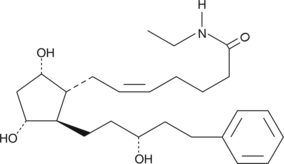
-
GC44038
Latanoprost Lactol
Latanoprost is an F-series prostaglandin analog which has been approved for use as an ocular hypotensive drug.
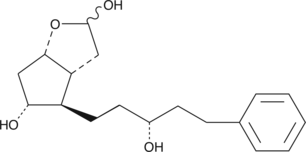
-
GC52264
Latanoprost tris(triethylsilyl) ether
A precursor in the synthesis of latanoprost

-
GC40239
Limaprost-d3
Limaprost-d3 is intended for use as an internal standard for the quantification of limaprost by GC- or LC-MS.

-
GC44092
Lumula
There are currently four prostaglandin (PG) derivatives which have been approved for human clinical use for the treatment of glaucoma.
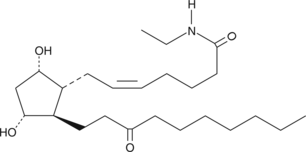
-
GC41178
Lythrine
Lythrine is an alkaloid originally isolated from H.

-
GC47679
Minoxidil-d10
An internal standard for the quantification of minoxidil

-
GC40984
ML-148
ML-148 es un inhibidor potente y selectivo de 15-PGDH con una IC50 de 56 nM.

-
GC47734
Nabumetone-d3
An internal standard for the quantification of nabumetone

-
GC44433
Nocloprost
Nocloprost is a stable prostaglandin E2 analog with gastroprotective and ulcer-healing properties.

-
GC49316
O-Desmethyl-N-deschlorobenzoyl Indomethacin
A metabolite of indomethacin

-
GC49098
Olsalazine-13C6
An internal standard for the quantification of olsalazine

-
GC49054
Oxaprozin-d5
An internal standard for the quantification of oxaprozin

-
GC44541
PAF C-18
PAF C-18 is a naturally occurring phospholipid produced upon stimulation through two distinct pathways known as the "remodeling" and 'de novo' pathways.

-
GC44614
PGDM
Prostaglandin D2 (PGD2) plays a pharmacological role in allergic and asthmatic anaphylaxis, normal physiological sleep and lowering of body temperature, as well as inhibits platelet aggregation and relaxes vascular smooth muscle.

-
GC49128
Phenylbutazone-d9
An internal standard for the quantification of phenylbutazone

-
GC18323
Picotamide
La picotamida es un inhibidor combinado de la sintasa y el receptor de tromboxano A2 (TxA2).
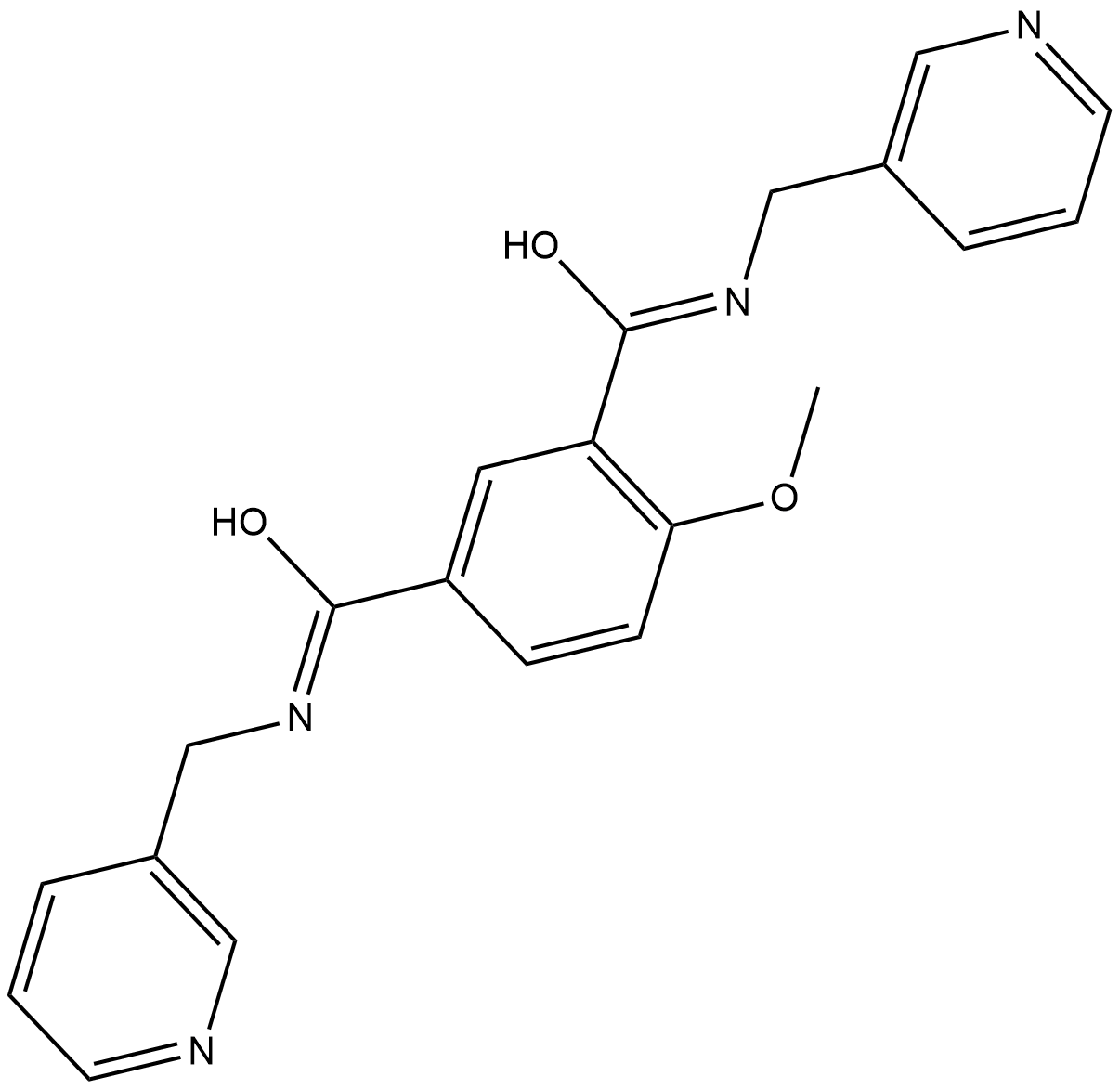
-
GC18707
Pimprinine
Pimprinine is an alkaloid originally isolated from Streptomyces that has diverse biological activities, including anticonvulsant, antiplatelet, and antimicrobial properties.
